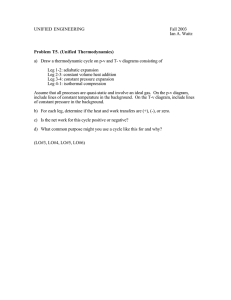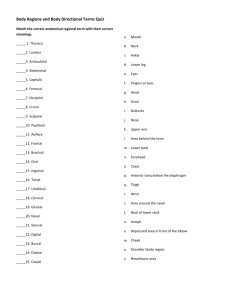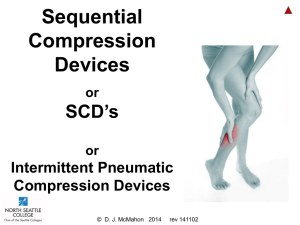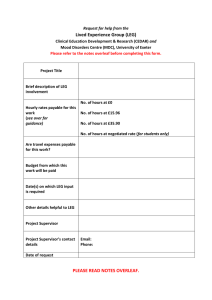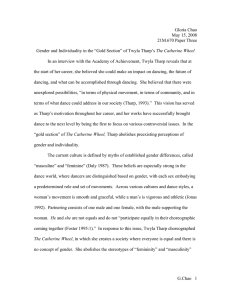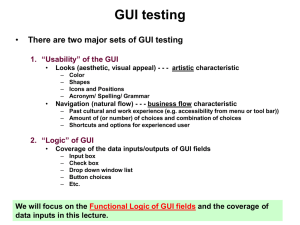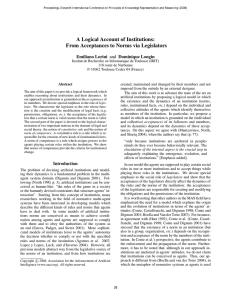Document 13468446
advertisement
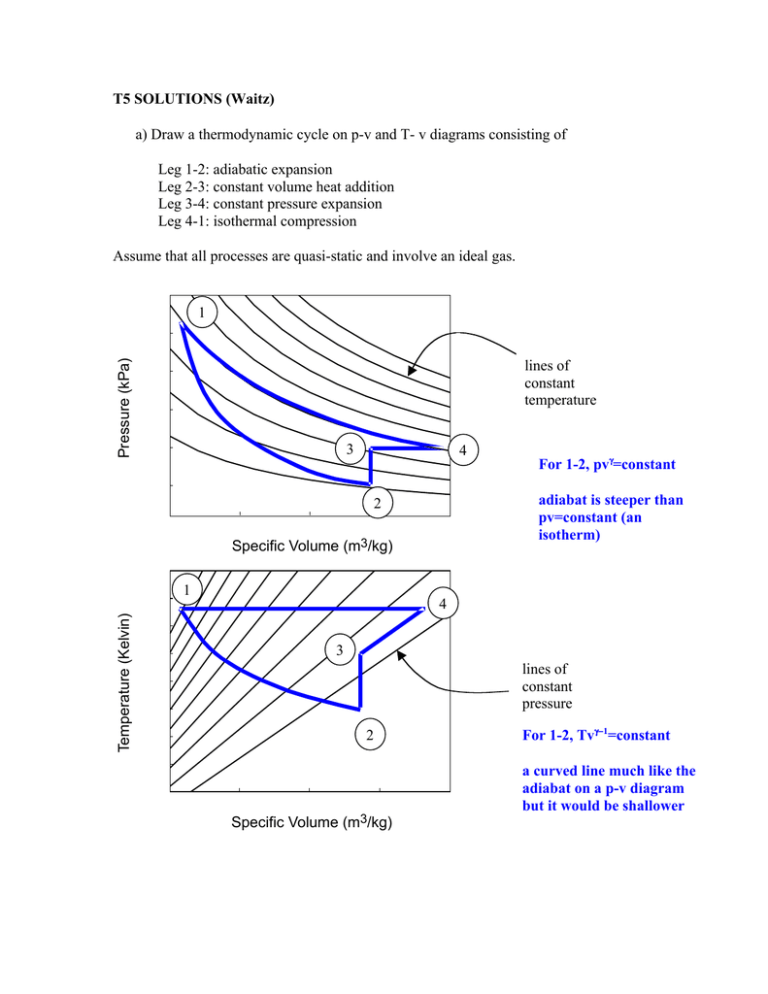
T5 SOLUTIONS (Waitz) a) Draw a thermodynamic cycle on p-v and T- v diagrams consisting of Leg 1-2: adiabatic expansion Leg 2-3: constant volume heat addition Leg 3-4: constant pressure expansion Leg 4-1: isothermal compression Assume that all processes are quasi-static and involve an ideal gas. 300 1 Pressure (kPa) 250 lines of constant temperature 200 150 100 3 4 For 1-2, pvγ=constant 50 2 0.5 0.75 1.0 1.25 Specific Volume (m3/kg) 1.5 adiabat is steeper than pv=constant (an isotherm) 600 Temperature (Kelvin) 550 1 4 500 450 3 lines of constant pressure 400 350 300 For 1-2, Tvγ−1=constant 2 250 200 0.5 0.75 1.0 1.25 Specific Volume (m3/kg) 1.5 a curved line much like the adiabat on a p-v diagram but it would be shallower b) For each leg determine if the heat and work transfers are (+), (-), or zero. Q ( +, -, or zero) W ( + , -, or zero) Leg 1 -2 0 + Leg 2 -3 + 0 Leg 3 -4 + + Leg 4 -1 - - c) Is the net work for this cycle positive or negative? The net work for this cycle is negative The area under the expansion process is less than the area under the compression processes. d) What common purpose might you use a cycle like this for and why? This cycle could serve as a cooler or refrigerator. Overall it takes in energy in the form of heat from cold temperatures and expels energy in the form of heat from high temperatures. The net work for the cycle as a whole is negative, meaning that energy is put into the system to enable these transfers of heat to take place.
